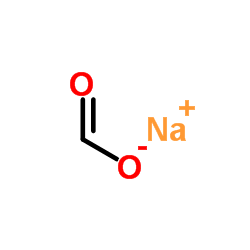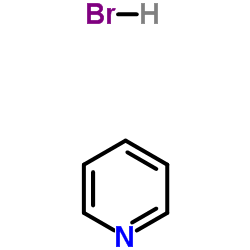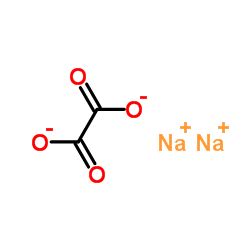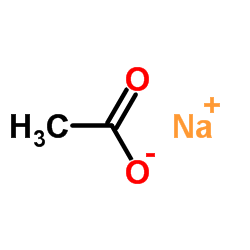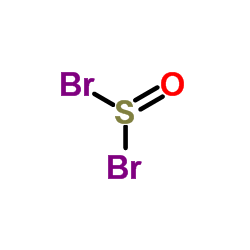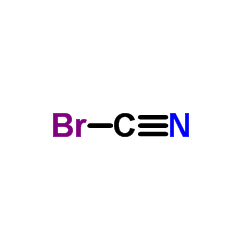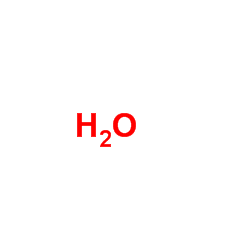This product was successfully added to cart!
品牌商品推荐
更多 >>商品详情
客户评价
| 密度 | 3,203 g/cm3 |
|---|---|
| 沸点 | 1390 °C |
| 熔点 | 755?°C(lit.) |
| 分子式 | BrNa |
| 分子量 | 102.894 |
| 闪点 | 1390°C |
| 精确质量 | 101.908096 |
| 外观性状 | 白色粉末 |
| 蒸汽压 | 1 mm Hg ( 806 °C) |
| 折射率 | 1.6412 |
| 储存条件 |
1.应贮存在干燥、阴凉、通风良好的地方。要防止日光曝晒,与火种和热源隔离,不得与氨、氧、磷、锑粉和碱类共贮混运。应远离木屑、刨花、稻草等,以防燃烧。 2.失火时,可用沙土、二氧化碳灭火器扑救。 |
| 稳定性 |
1.在空气中有吸湿性。易溶于水(100 ℃时溶解度为121 g/100 ml水),水溶液呈中性。微溶于醇。51 ℃时溶液中析出无水溴化钠结晶,低于51 ℃则生成二水物。其溴离子可被氟、氯所取代。在酸性条件下,能被氧氧化,游离出溴。可与稀硫酸反应生成溴化氢。 |
| 水溶解性 | 905 g/L (20 ?C) |
| 计算化学 |
1.疏水参数计算参考值(XlogP):无 2.氢键供体数量:0 3.氢键受体数量:1 4.可旋转化学键数量:0 5.互变异构体数量:无 6.拓扑分子极性表面积0 7.重原子数量:2 8.表面电荷:0 9.复杂度:2 10.同位素原子数量:0 11.确定原子立构中心数量:0 12.不确定原子立构中心数量:0 13.确定化学键立构中心数量:0 14.不确定化学键立构中心数量:0 15.共价键单元数量:2 |
| 更多 | 1.性状:无色立方晶系晶体或白色颗粒状粉末。无臭,味咸而微苦。 2.密度(g/mL,25 ℃ ): 3.203
3.熔点(?C):755 4.沸点(?C,常压):1390℃ 5.折射率:1.6412 6.闪点(?C):1390 7溶解性:易溶于水(100℃时溶解度为121g/100ml水),水溶液呈中性。微溶于醇。51℃时溶液中析出无水溴化钠结晶,低于51℃则生成二水物。905g/L(20?C时) |
|
|
|
溴化钠毒性英文版
|
| 个人防护装备 |
Eyeshields;Gloves;type N95 (US);type P1 (EN143) respirator filter |
|---|---|
| 危害码 (欧洲) |
Xi: Irritant; |
| 风险声明 (欧洲) |
R36/37/38 |
| 安全声明 (欧洲) |
S24/25-S25 |
| 危险品运输编码 | NONH for all modes of transport |
| WGK德国 | 1 |
| RTECS号 | VZ3150000 |
| 海关编码 | 2827510000 |
| 溴化钠上游产品? 7 | |
|---|---|
|
|
|
|
|
|
| 溴化钠下游产品? 8 | |
|
|
|
|
|
|
尿素还原法 将纯碱(碳酸钠)、尿素用热水溶解,并送入反应器中,缓慢加入溴素进行反应,生成溴化钠。然后再加入活性炭脱色,经过滤、蒸发结晶、离心分离、干燥,制得溴化钠成品。其反应方程式如下:
中和法 将约40%的氢溴酸加入反应器中,在搅拌下缓慢加入40%烧碱溶液进行中和,至Ph7.5~8时生成溴化钠,经离心分离、蒸发、结晶再离心分离,制得溴化钠成品。其反应方程式如下:
3.碳酸钠、尿素用热水溶解,通入溴素,还原生成溴化钠,然后加入活性炭脱色、过滤、蒸发、结晶即得。
4. 将碳酸氢钠慢慢加到氢溴酸溶液中进行中和反应:

| 海关编码 | 2827510000 |
|---|
|
Chemical isolation and characterization of different cellulose nanofibers from cotton stalks. Carbohydr. Polym. 134 , 581-9, (2015)
Recently, cellulose nanofibers (CNFs) have received wide attention in green nanomaterial technologies. Production of CNFs from agricultural residues has many economic and environmental advantages. In …
|
|
|
Antioxidants Inhibit Formation of 3-Monochloropropane-1,2-diol Esters in Model Reactions. J. Agric. Food Chem. 63 , 9850-4, (2015)
The capacities of six antioxidants to inhibit the formation of 3-monochloropropane-1,2 diol (3-MCPD) esters were examined in this study. Inhibitory capacities of the antioxidants were investigated bot…
|
|
|
Toxic impact of bromide and iodide on drinking water disinfected with chlorine or chloramines. Environ. Sci. Technol. 48(20) , 12362-9, (2014)
Disinfectants inactivate pathogens in source water; however, they also react with organic matter and bromide/iodide to form disinfection byproducts (DBPs). Although only a few DBP classes have been sy…
|
|
|
sodium boron |
|
NaBr |
|
Sedoneural |
|
Natriumbromid |
|
SODIUM BROMID |
|
EINECS 231-830-3 |
|
Sodum bromide |
|
bromuredesodium |
|
bromnatrium |
|
sodiium bromide |
|
sodium bromine |
|
Sodiumbomide |
|
MFCD00003475 |













